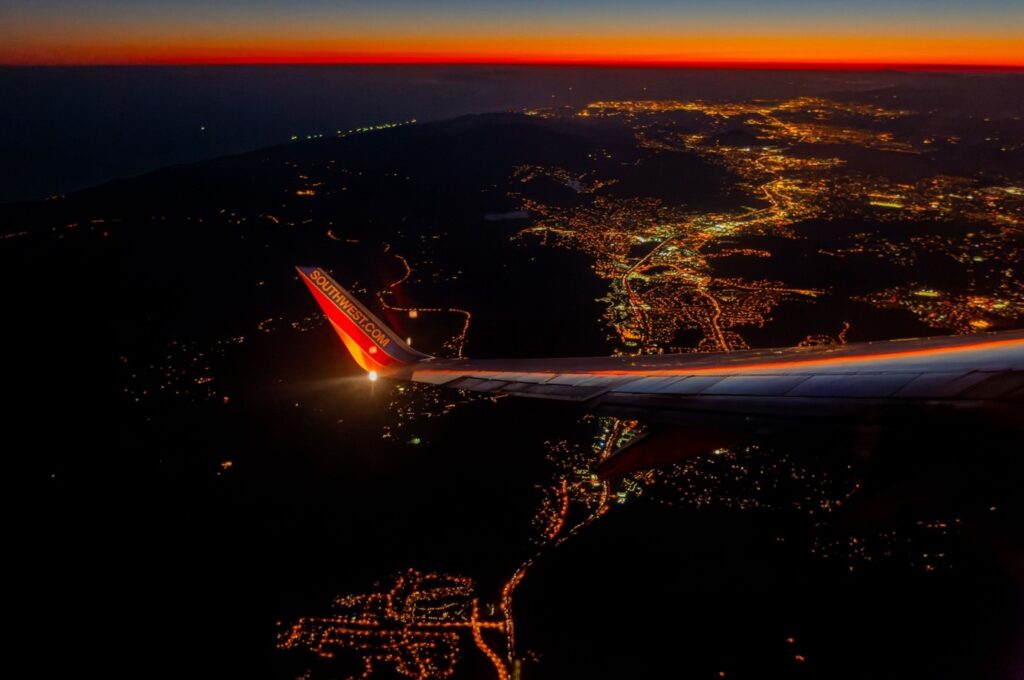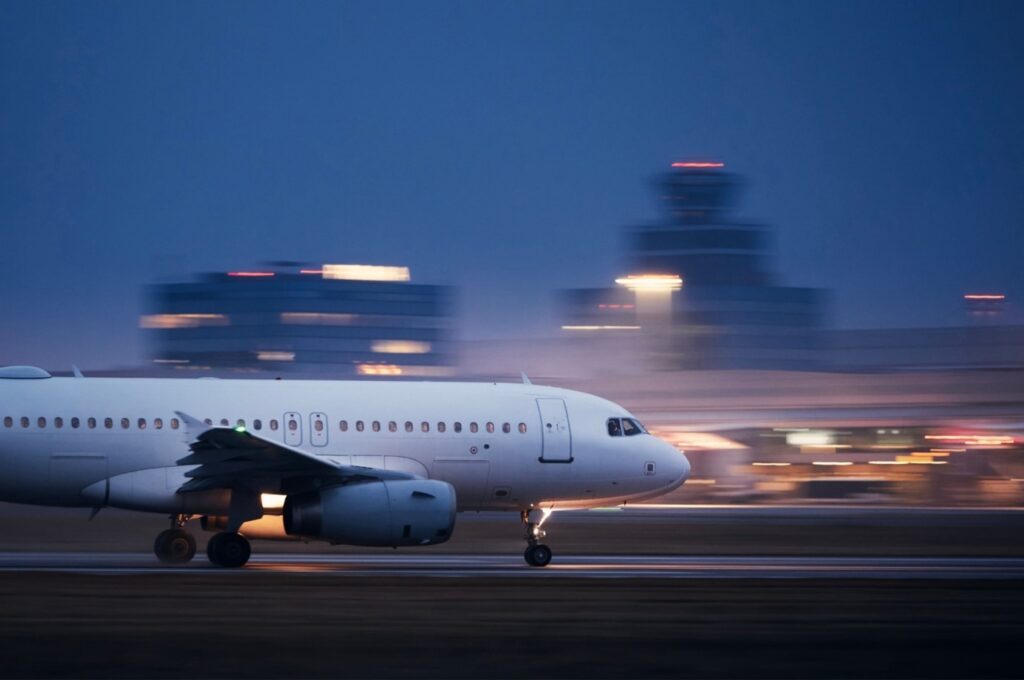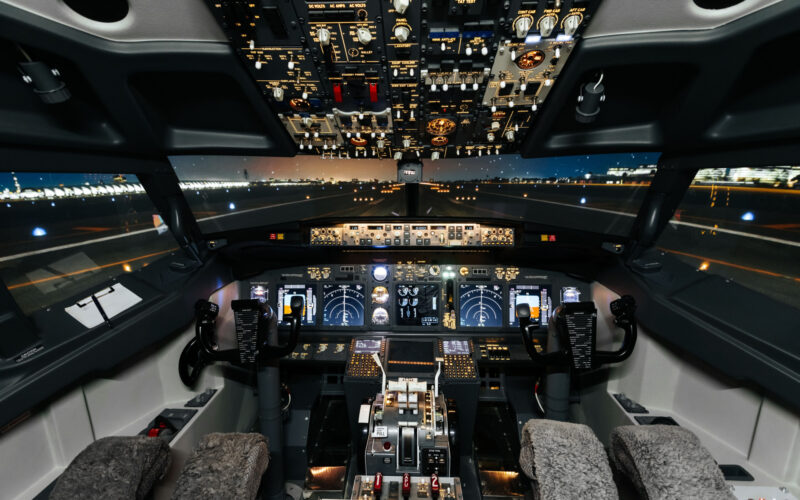The appeal of flying at night is hard to resist – the peaceful beauty of a sky full of stars, the calmness of the world beneath you, and the thrill of soaring through the darkness. Indeed, flying at night is an essential aspect of aviation, as it allows pilots to operate around the clock, facilitating travel and emergency response. However, navigating the night skies presents unique challenges and demands specialized skills.
In this article, we will explore the necessity and safety of flying at night, the mechanics behind it, and how pilots prepare for night journeys.
Is it necessary for pilots to fly at night?
Nighttime flying is not merely a choice for pilots; it is a necessity in the world of aviation. The aviation industry relies heavily on night operations for various reasons:
Emergency response
Medical evacuation flights, search and rescue operations, and disaster relief efforts often require round-the-clock availability. Pilots must be capable of flying at night to ensure a rapid response when needed.
Global travel
Commercial aviation is a 24/7 industry, connecting people and goods across time zones. Night flights enable airlines to offer more options to passengers, enhancing convenience and accessibility.
Freight transport
Cargo planes frequently operate at night to optimize schedules and reduce airport congestion. This is vital for maintaining the global supply chain.
Training
Aspiring pilots must log a certain number of night flight hours to obtain various licenses, such as an instrument rating or an airline transport pilot certificate.
How safe is flying at night?
Safety is of course a paramount concern in aviation, and flying at night is considered perfectly safe when proper procedures and precautions are followed. Despite the unique challenges posed by darkness, numerous factors contribute to the safety of nighttime operations.
Advanced technology, including modern navigation systems, weather radar and autopilot features, has significantly enhanced the safety of night flights. These systems provide pilots with crucial information and assistance in maintaining course and altitude.
Training is another critical component of nighttime safety. Pilots undergo specialized training to handle the challenges of night flying, such as coping with reduced visibility and interpreting instrument data. This training equips them with the necessary skills and knowledge to operate safely during nighttime hours.
Air traffic control (ATC) also plays a vital role in ensuring the safety of night flights. ATC personnel guide aircraft, provide traffic separation and offer valuable information on weather conditions and other potential hazards. These services function 24/7, ensuring that pilots are adequately supported during nighttime operations.
Additionally, aviation authorities worldwide impose strict regulations and standards for nighttime flying. These regulations encompass various aspects, including requirements for adequate lighting at airports, equipment standards and pilot qualifications. Adherence to these regulations helps to maintain the safety of night operations.
While flying at night can be as safe as daytime operations, it requires vigilance, adherence to regulations and continuous training to mitigate risks effectively.

Can pilots sleep while flying?
Under certain circumstances, pilots are allowed to sleep during flights. However, there are very specific rules in place. Aviation regulations require pilots to be alert and attentive at all times. However, on long-haul flights, especially for commercial airlines, cockpit crews often follow a schedule where they take turns having a rest break, known as controlled resting, in specially designed crew rest areas to combat fatigue during extended flights. This rest cycle ensures that there’s always at least one pilot alert and capable of flying the aircraft.
In the United States, if a commercial flight takes more than 8 hours only then pilots are allowed to sleep.
How does flying at night work?
Flying at night presents a unique set of challenges to pilots, primarily related to reduced visibility and the need for enhanced reliance on instruments. As the sun sets, natural light diminishes, making it more challenging to identify landmarks and other aircraft. To navigate through the dark skies, pilots rely on a combination of advanced technology and specialized training.
Modern aircraft are equipped with sophisticated navigation systems, including GPS, which provides precise positioning information. These systems, along with onboard weather radar and autopilot features, enhance safety during night flights. However, when visibility is limited, pilots often resort to instrument flight, where they rely on cockpit instruments to maintain their heading, altitude and airspeed. This necessitates extensive training in interpreting instrument data and responding to various flight scenarios.
Furthermore, lighting is a crucial aspect of nighttime aviation. Aircraft are equipped with various specific lighting facilities, including navigation lights, anti-collision lights and landing lights, to enhance visibility to other aircraft and ground personnel.
Airports also play a vital role in facilitating night flights. They are equipped with extensive lighting systems, including runway lights, taxiway lights and approach lighting systems such as Precision Approach Path Indicator (PAPI) and Visual Approach Slope Indicator (VASI).
These systems guide pilots during takeoff, landing and taxiing, ensuring safe and precise operations even in low-light conditions.

How do pilots prepare to fly at night?
Preparation is key for a successful night flight. Pilots follow a structured process that includes the following:
Flight planning
Rigorous planning involves checking weather forecasts, fuel requirements, and alternative routes. It’s crucial to have a solid flight plan before taking off.
Operating hours
Familiarizing themselves with the specific airport’s operating hours, especially if they are planning on landing during the night, is crucial for pilots.
Night flight regulations
Before flying at night, pilots must grasp the regulations that govern nighttime aviation, including relevant lighting requirements and instrument qualifications.
Weather monitoring
Continuous weather monitoring is essential for night flights. Pilots must be vigilant and ready for sudden weather changes that may necessitate diverting to an alternate airport.
Takeoff and landing
Caution is key during nighttime takeoffs and landings. Pilots heavily rely on other aircraft lighting, ground-based guidance systems, and flight instruments to ensure safe and precise operations. Meanwhile, aircraft lighting assists ground controllers and other aircraft nearby in easily spotting the plane.
Signal lights (PAPI/VASI) and illusions
Pilots should have a full understanding of the significance of PAPI and VASI lights for maintaining accurate descent paths during night landings. They should also be aware of potential optical illusions that can impact perception at night.
Trusting the instruments
Developing trust in cockpit instruments is crucial for night flying. These instruments become the primary reference points for maintaining heading, altitude, and airspeed during the night, ensuring safe and controlled flight.
Pros & Cons of flying at night
Pros:
- Reduced air traffic: nighttime flights often experience less air traffic, leading to smoother and quicker journeys.
- Calmer weather: winds and turbulence tend to be calmer at night, making for a smoother ride.
- Scenic views: pilots and passengers can enjoy breathtaking celestial views, including stars, planets and even the aurora borealis.

Cons:
- Reduced visibility: darkness limits visibility, making it challenging to identify terrain features and other aircraft.
- Fatigue: nighttime operations can be more mentally taxing, potentially leading to pilot fatigue.
- Weather challenges: weather conditions can be less predictable at night, with an increased likelihood of fog, thunderstorms or ice.
In conclusion, flying at night is an essential aspect of aviation, enabling around-the-clock operations. While it presents unique challenges, with proper training, technology and preparation, pilots can navigate the dark skies safely and efficiently. Pilots’ dedication to safety, adherence to regulations and reliance on instruments make nighttime flying a crucial and manageable component of modern aviation.


